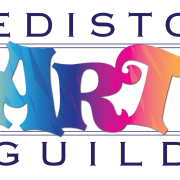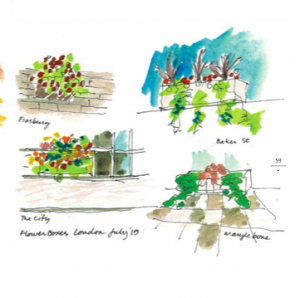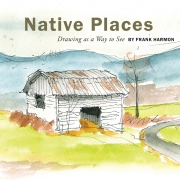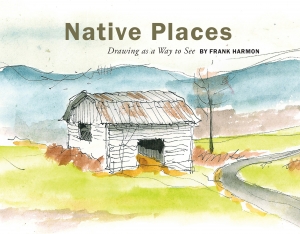Edisto Art Guild to Host Architect/Author Frank Harmon and ‘Native Places: Drawing as a Way to See’
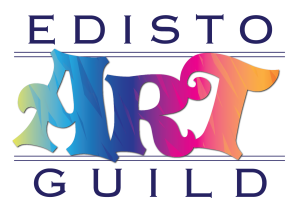 Architect and author Frank Harmon, FAIA, who designed the modern, award-winning Sunday School addition to the historic Circular Congregational Church in Charleston and the “Seven Sisters” residence on St. Helena Island, will present his new, critically acclaimed book Native Places: Drawing as a Way to See when the Edisto Art Guild hosts a book-signing event on Monday, January 14, in the Edisto Beach Civic Center.
Architect and author Frank Harmon, FAIA, who designed the modern, award-winning Sunday School addition to the historic Circular Congregational Church in Charleston and the “Seven Sisters” residence on St. Helena Island, will present his new, critically acclaimed book Native Places: Drawing as a Way to See when the Edisto Art Guild hosts a book-signing event on Monday, January 14, in the Edisto Beach Civic Center.
Free and open to the public, the Art Guild’s event will begin at 6:30 pm when South Carolina architect Lloyd Bray introduces the Raleigh, NC-based author. Harmon will then give a presentation about his book and his passion for hand sketching. After a Q&A with the audience, he will sign copies of Native Places, which will be available for purchase in the civic center.
Delight in Ordinary Places: Published by ORO Editions, Native Places: Drawing as a Way to See is a collection of 64 of Harmon’s watercolor sketches paired with brief essays he’s written about architecture, everyday objects and sites, and nature that first appeared on his internationally popular blog NativePlaces.org. The sketches convey the delight he finds in ordinary places. The short essays, inspired by the sketches, offer his fresh interpretations of what most people take for granted.
Harmon’s goal for Native Places is, in fact, “to transform the way we see,” he says, and to promote his belief that hand drawing offers “an opportunity to develop a natural grace in the way we view the world and take part in it.” He will explain both concepts in his presentation.
What others are saying about Native Places: In a letter to the author, Fred Chappell, poet, author, and former North Carolina poet laureate, wrote, “Native Places…has afforded me happy pleasures, different from any that I have before derived from a book. It is unusual in many ways, one of which is that it defies strict classification. It is a sketchbook, a memoir, travel journal, aesthetic experiment, a collection of small familiar essays, and maybe in some respects even a manifesto.”
Mike Welton, the architecture critic for the Raleigh News & Observer, calls Harmon’s book “delightful” and suggests that it is “destined to change how we see this world.”
Tom Kundig, FAIA, of Olsen Kundig Architects in Seattle, WA, praises Harmon and his book for “reminding us in brilliant, thoughtful, quiet meditation our unbelievable luck to be alive and to think. A masterful legacy on all levels.”
The Edisto Beach Civic Center is located at 42 Station Court, Edisto Island, SC. (edistoartguild@gmail.com)
For more details on Frank Harmon and Native Places: Drawing as a Way to See, visit the book’s website (nativeplacesthebook.com) and Facebook page.

